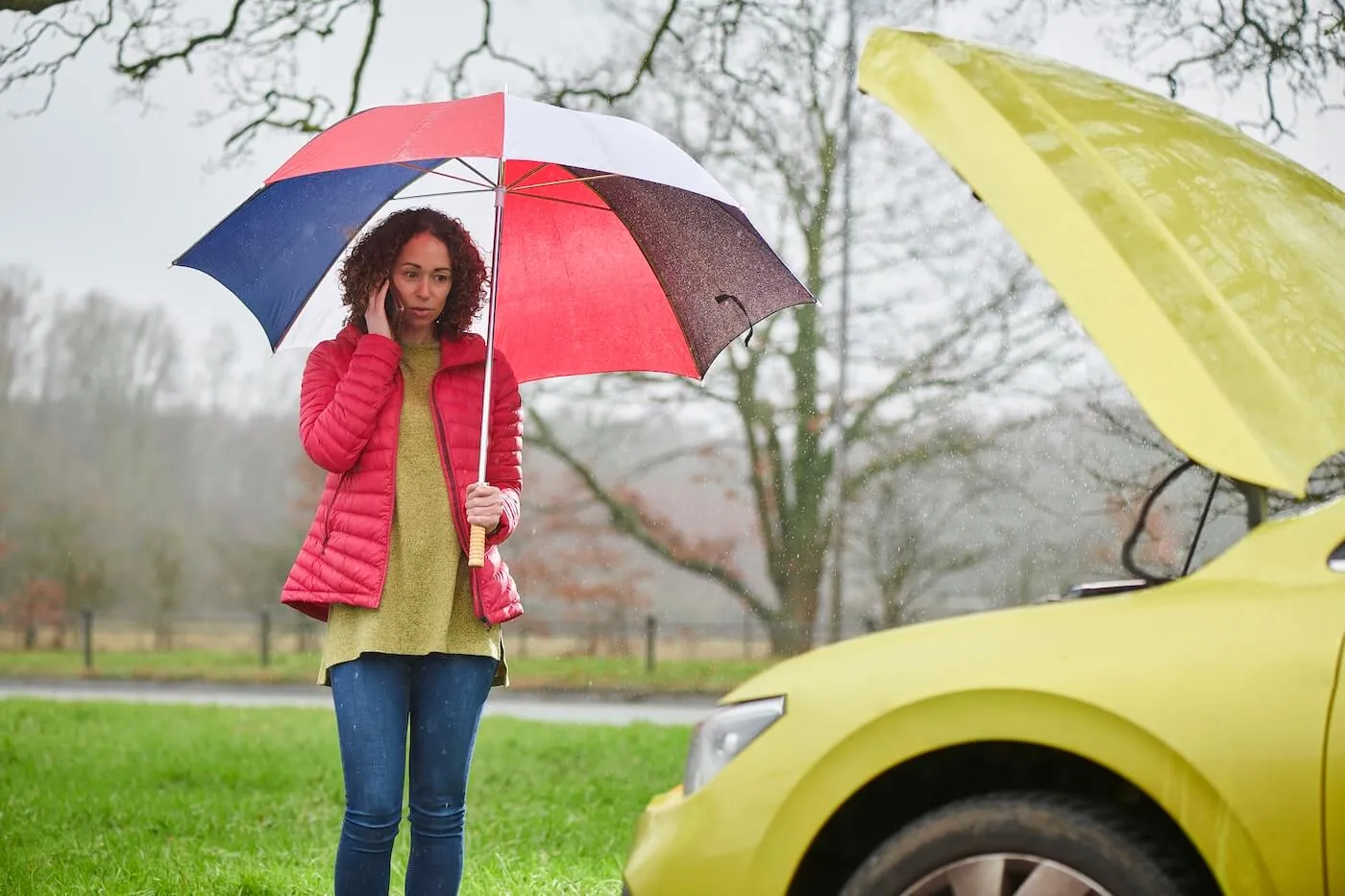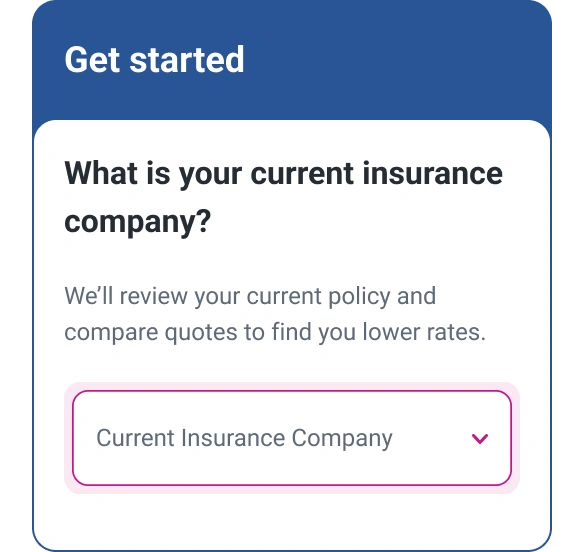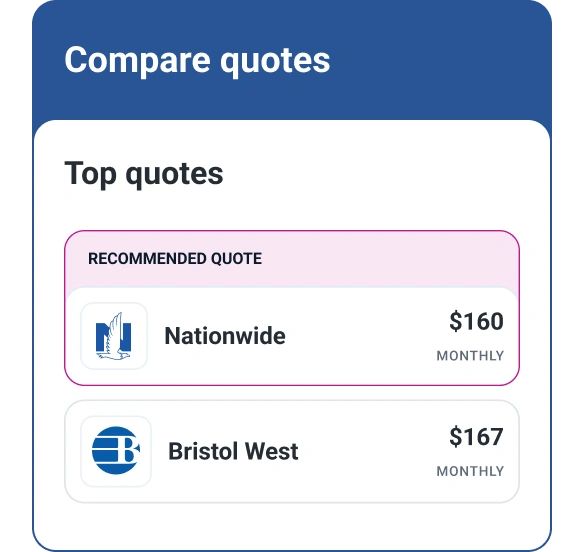Does Car Insurance Cover Flood and Water Damage?
Quick Answer
Your car insurance should cover most instances of flood and water damage if you have comprehensive coverage. It’s optional to add to your policy, though lenders often require it for financed vehicles.

Flood waters can damage a car's engine, transmission, electronic systems and interior, resulting in costly repairs. If your auto insurance policy includes comprehensive coverage, your insurer should help pay for those repairs—in most instances.
Comprehensive coverage is optional, and it can be tempting not to include it to save money, but that gamble could leave you with massive repair bills down the road. Before deciding whether to include it, here's what you need to know about how it can protect you against flood and other water-related damage.
Are Flood and Water Damage Covered by Insurance?
Flood and water damage are typically covered if you have comprehensive coverage, which helps pay for repairs (after meeting your deductible) due to non-accident incidents that are out of your control, such as:
- Water damage caused by hail that breaks your windows or windshield
- Flood water seeping into your car while it's parked in your driveway or on the street
- Driving through a large puddle that damages your engine
- Tree limbs or other objects falling onto and damaging your car during a severe storm
- Mold or rust resulting from flood waters flowing into your vehicle
Comprehensive insurance doesn't cover damage stemming from poor maintenance or negligence, however, and it won't pay to replace electronic equipment that didn't come with the car. So, if you had a leak you didn't get repaired that resulted in mold or further damage, forgot to put your windows up before a storm or installed custom stereo equipment, you'll be stuck paying for repairs out of pocket.
Learn more: What Does Car Insurance Cover?
Adding Comprehensive Coverage to Your Policy
Unlike liability coverage, which is required by law in nearly every state, comprehensive is optional unless you have an auto loan or lease, in which case your lender will likely require it. If you want to add on a comprehensive policy, it's best to do so well in advance of when you expect you might need it.
If you try to add it when the next storm is approaching, you may not be able to get coverage in time. When severe weather is on the way, insurers may introduce "binding restrictions" that prohibit drivers from making changes to existing policies or purchasing new ones until after the storm passes.
How to File a Car Insurance Claim for Flood Damage
The process for filing a car insurance claim may vary slightly among insurers, but you can typically complete it in a few simple steps.
- Contact your agent or insurer. Many providers offer multiple options for filing a claim, including online, by phone and in the company's app.
- Document the damage. Your agent or insurer will likely ask you to send photos or a video of the damage.
- Have the vehicle inspected. The insurance company usually sends an adjuster out to survey the damage and estimate repair costs.
- Receive your payment. Your insurer may provide you or the repair shop with a check for the estimated repair costs or cut you a check for the actual cash value of your vehicle (minus your deductible) if repairs exceed the value of the car and they declare it a total loss.
What to Do if Flood and Water Damage Are Not Covered
If you find yourself in a situation where insurance won't cover the damage and you need another way to pay for repairs, here are some options.
- Tap your emergency fund. A vehicle that needs to be repaired or replaced is one of those moments emergency funds are made for. Remember to replenish the amount you use so you're prepared for life's next curveball.
- Get a personal loan. If your repair bill is steep, another option is to take out a small personal loan. Interest rates can be high on personal loans, however, so it's best to pay off your loan as soon as possible.
- Borrow from friends or family. Borrowing money from family or friends may not be your top choice for handling financial difficulty. But if you don't have the cash to cover repairs, it may be a better alternative than paying interest on a credit card or personal loan. Be sure everyone's clear on the terms of the arrangement and repay what you borrow on time to keep your relationship intact.
- Use a credit card. If you have no other alternative, consider putting some or all of the cost on your credit card with the lowest interest rate, and pay your balance as fast as possible to reduce interest charges. If you don't have a card with a low rate or need more than a few months to repay it, consider getting an intro 0% APR credit card. These often allow interest-free purchases for a year or longer if you pay your balance before the much higher regular interest rate kicks in.
Compare personal loan rates
Find APRs from 4.99% to 35.99% and flexible terms of 12 to 120 months. Loan amounts range from $1,000 up to $250,000, with funding available the same day or up to 7 days.
Offers from our partners
View all of our Best Personal Loans for 2025 to see what you’re likely to qualify for, and the rates and terms you might get.
How to Prevent Flood Damage to Your Car
While some flood damage may be unavoidable, preventing it—when possible—will save you the hassle of having to repair or replace your vehicle. Here are some tips to help you avoid flood and water damage.
- Keep the windows up. Get into the habit of closing your windows every time you get out of your car.
- Monitor the weather. There's no shortage of ways to monitor the weather nowadays. Apps, the internet and your local news stations can help you stay on top of the latest storms heading your way so you can take steps to protect your vehicle.
- Move your car. If you live in a flood-prone area, consider moving your car to higher ground when a storm is coming.
- Avoid driving through standing or flowing water. It isn't always easy to judge how deep water is when it's covering a road. That "puddle" may be much deeper than it appears. To keep your car (and yourself) safe, don't drive through water when you can't be sure of its depth.
- Park in a garage. Parking your car in a garage may not prevent damage from a 10-foot storm surge, but it can help protect it from hail and falling objects that can damage your vehicle and allow rainwater in.
Learn more: How to Protect Your Car's Value
Frequently Asked Questions
The Bottom Line
Car insurance isn't cheap, and it may be tempting to scrimp on your policy to reduce your premium. While going with the cheapest option will save you money now, it could cost you in the long run. If intense storms or flooding damage your vehicle, you could find yourself in the undesirable position of being responsible for thousands of dollars in out-of-pocket expenses.
To help determine if maintaining comprehensive coverage is worth the added expense, consider the value of your car. If you drive an older model that isn't worth much, paying for comprehensive coverage may not make sense. But if you have a new car or a vehicle that's worth a substantial amount, paying for coverage upfront can help protect your finances when Mother Nature strikes.
Not sure you can afford the added expense? Experian's car insurance comparison tool lets you compare policies from multiple providers to help you find coverage that fits your budget.
Don’t overpay for auto insurance
If you’re looking for ways to cut back on monthly costs, it could be a good idea to see if you can save on your auto insurance.
Find savingsAbout the author
Jennifer Brozic is a freelance content marketing writer specializing in personal finance topics, including building credit, personal loans, auto loans, credit cards, mortgages, budgeting, insurance, retirement planning and more.
Read more from Jennifer

